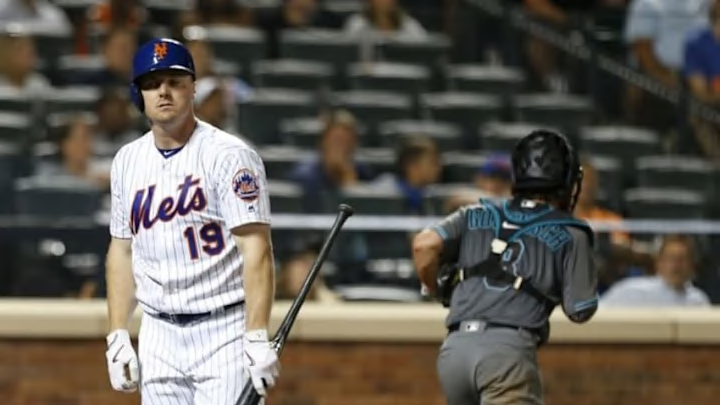The Mets’ trade for Jay Bruce is a prime example of what happens when a team or a general manager operates in a panic mode at the MLB trade deadline. And while Sandy Alderson should be held accountable for making the last minute deal, the trade deadline deserves to be abolished because it’s not good for the game of baseball.
The trade deadline was manufactured by MLB following a “transaction” that occurred in 1917. Not surprisingly, when the first professional leagues were organized in the late 19th century, there were no provisions for the exchange of players. Organized leagues and sometimes even individual teams operated independently, leaving open the opportunity for chaos to develop.
When the New York Yankees purchased Babe Ruth from the Boston Red Sox “for a little over $100,000 (plus some other financial interests, including help on the mortgage to Fenway Park), the rest of the league was outraged at the idea of the Yankees using their great financial strength to take advantage of the Red Sox to the detriment of the rest of the American League.” (SABR)
As with anything new, the novelty of the idea created a wave of interest that resulted in a number of teams exchanging players and/or cash. The Yankees and Red Sox continued to be active and finally the owners acted to create a deadline of June 15. In 1986, the deadline was extended to July 31 where it stands today.
So that’s the history. Now here’s the problem that has developed. A flurry of activity always occurs as time winds down on the ticking MLB and ESPN clock in the corner of the screen. A clock, by the way, that they start up a couple of days before the 31st.
What does that suggest? To me it seems that the trade deadline has become a ratings bonanza for all types of media as everyone makes their crystal ball predictions about who’s staying and who’s going. General managers and players potentially involved in trades are besieged with interview requests. Phones ring off the hook.
The pressure mounts on GMs who have done nothing to improve their team. The clock keeps ticking. A Sandy Alderson has to “do something.” He does.
And that is how a Jay Bruce, (.191 BA, 3 HR, 6 RBI in his last 30 games with the Mets) ends up in a city that is not enamored with him and with a team he doesn’t want to be with.
How much thought was given to this deal by the Mets, and in particular by Sandy Alderson? How much vetting was done? Did anyone even bother to speak with his agent? How many scouts were consulted?
That kind of a trade is good for no one. And it’s certainly not good for baseball.
More from Call to the Pen
- Philadelphia Phillies, ready for a stretch run, bomb St. Louis Cardinals
- Philadelphia Phillies: The 4 players on the franchise’s Mount Rushmore
- Boston Red Sox fans should be upset over Mookie Betts’ comment
- Analyzing the Boston Red Sox trade for Dave Henderson and Spike Owen
- 2023 MLB postseason likely to have a strange look without Yankees, Red Sox, Cardinals
But the central question is really this: Why does the game of baseball even need the trade deadline? Players are added and subtracted after the deadline using the waiver process which has some complications, but they are almost always overcome.
Adan Dunn and John Smoltz , for instance, were both moved after the deadline via a waiver deal. The Smoltz deal was especially interesting because it involved another pitcher, journeyman Doyle Alexander, who went 9-0 in 11 starts for the Detroit Tigers in 1987, propelling the team to a pennant.
A drawback to waiver deals is that there’s a deadline on them also. After August 31, deals can still be made but players who are acquired cannot be eligible for the playoffs. That rule should probably stay because at a certain point you don’t want to see the integrity of the game threatened. For example, it would not be good for the game if the Cleveland Indians acquired Chris Sale from the White Sox in a waiver deal on September 30 and he is named as the starting pitcher for the Indians in game one of the ALDS.
To reiterate, the July 31 deadline creates a media frenzy that may or may not be good for baseball. But it also creates the opportunity for rash deals that are made by teams under pressure from the same media to “do something.” The Jay Bruce trade smells of that. And if the Mets thought they were getting the second coming of Yoenis Cespedes in Bruce, they need to have their heads examined for another reason.
Next: Kershaw Experimenting with Arm Angles
Finally, if Sandy Alderson had the chance to undo the deal for Bruce, while admitting that he rushed into it at the last minute, he’d do it in a instant. Bottom line – if a deal can be made on Opening Day, why can’t a deal be made just before game 162?
